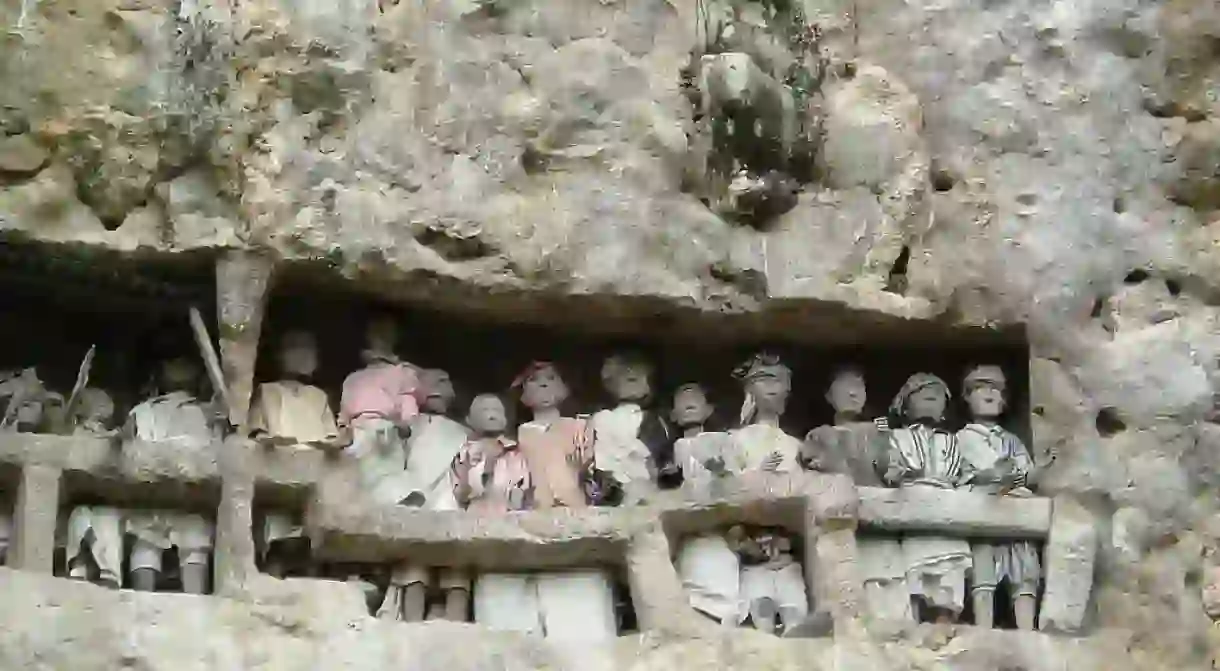The Most Unique Cultures in Indonesia You Should Know

Home to at least 300 ethnic groups, Indonesia is a melting pot of diverse cultures, each with its own specific individuality. From the world-famous Balinese to remote ancient communities, discover the most unique cultures in Indonesia you should know.
Asmat
The popularity of the Asmat’s iconic wood carvings establishes them as the most well-known ethnic groups from Papua, a distant land where so many aspects are still unexplored by the outside world. On the other hand, the Asmat is infamous for being a cannibalistic tribe, traditionally living naked in trees and cutting off people’s heads as ritual. While the gory practice is now gone, the ethnic tribe retain their deep, symbolic craft that still tells stories about the heinous clan who grilled their enemy’s flesh while filling the air with a dark requiem.

Badui
Many people just view the Badui as a remote, underdeveloped community while actually, it’s their deep and intricate philosophy that holds them back from embracing the so-called modern lifestyle. The Baduis are earth-loving people who try their best to preserve the jungle they live in, even if that means restricting themselves from electronics, vehicles, and industry activities. Many would think that life would be dull without smartphones and TV, but that’s not the case with the Badui people. They lead a very active and productive life of farming, exploring, and creating their famous weaving craft.
https://www.instagram.com/p/BMiXasmh7ET/?tagged=sukubadui
Dieng
The people of Dieng live in an awe-inspiring plateau by the same name, a historical site above the clouds with mesmerizing views of nature. They are part of an ancient community with a unique set of beliefs, one of which surrounds a cultural festival that gathers thousands of people every year, the Dieng Culture Festival. The culture witnesses a curious phenomenon of children with unlikely natural dreadlocks, and they are considered a symbol of blessings of prosperity. The children are not born with dreadlocks, but instead, mysteriously develop them. These children, believed to be the embodiment of their ancestors, are at the center of the society, as well as the festival. Dieng comes from the local dialect Di Hyang that means “abode of the gods”, a belief reflected in the temple ruins thought to have once been a huge compound with at least 400 buildings.
Toraja
The fascinating culture and belief system (mostly around death) make this culture widely known for strange practices that often involve dead bodies, animal offerings, and graves. The Torajan people make it their absolute business to throw a grand, festive funeral ceremony, sometimes more than they can afford. They believe that the ceremony is essential to ensure their loved ones a smooth journey to the afterworld. Once a year, a festival takes place that involves the deceased bodies being taken out their graves and bathed, groomed, and taken for a walk around the neighborhood, as if there were still alive. In the past, some tourists even reported that the bodies can walk by themselves!

Tengger
The Tenggerese live around Mount Bromo, one of the most-visited tourist attraction in Indonesia. Their fascinating Kaskada ceremony adds beauty to the picturesque volcano, when offerings of harvest and poultry are thrown in to the mountain’s crater, followed by captivating cultural performances in the village. The culture is so integral to the attraction that the national park that covers Mount Bromo is named Bromo Tengger Semeru National Park. Legends circulate about how the ancient community are descendants of the Majapahit Kingdom’s princes who fled their kingdom to avoid attacks from Muslim kingdoms.
Bali
Probably the most well-known culture of Indonesia, the Balinese are graced with a beautiful island that has attracted millions of international tourists yearly. But it’s the fascinating, well-preserved culture that keeps tourists coming back for more. The Balinese have been keeping the balance between embracing modern life and preserving their ancestors’ customs, resulting in a fascinating community. As Indonesia’s biggest Hindu community, the Balinese are devoted to their religious practices, from daily offerings to ngaben funeral rites. Being accustomed to tourists swarming their land, Balinese are also beyond friendly, allowing tourists to take part on many of their captivating rituals. More than just a spiritual community, Balinese are also known as prominent artists —generations of silversmiths, traditional dancers, wood carvers, painters, and more.

Bugis
Living on a large peninsula of Sulawesi, many Bugis people are tough sailors and fishermen. Probably their most acclaimed heritage is the Pinisi, a gracious traditional ship that is said to have sailed the seven seas, despite being built by hand and without using adhesive. As a vital artifact to the Bugis life, the ship is rich with symbols and customs. The crafting of a Pinisi starts with elaborate rituals, from picking a date to gather materials, driving away spirits before cutting the wood, to setting up the plank and sailing it for the first time. Another unique feature of this culture is their recognition of five genders: cis-male, cis-female, androgynous shamans, trans-male, and trans-female.
https://www.instagram.com/p/BYLiFBXDFev/?tagged=kapalpinisi













